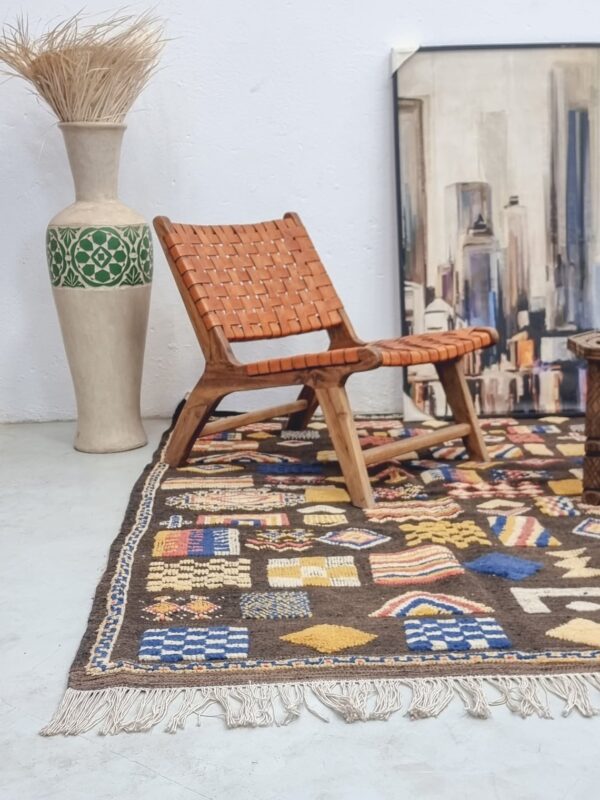The Timeless Berber Carpet Weaving Traditions of Morocco
Morocco’s rich cultural tapestry is reflected in its iconic Berber rugs, which have been woven by the indigenous Berber (Amazigh) people for centuries. These handmade rugs are more than just floor coverings; they are works of art steeped in history, culture, and symbolism. In this article, we explore the Berber weaving tradition in Morocco, its history, unique characteristics, and its modern-day appeal.
The History of Berber Rug Weaving in Morocco
The Berber rug tradition in Morocco dates back over 2,000 years, with its roots deeply embedded in the nomadic and pastoral lifestyles of the Berber tribes. The tribes, primarily from the Middle Atlas Mountains and the High Atlas Mountains, developed distinct weaving techniques to create warm, durable rugs suited to their harsh mountain environments.
For the Berbers, rug weaving is not only a practical necessity but also an artistic expression, with skills passed down from generation to generation, primarily from mother to daughter at home, as women used to weave carpets for their family’s use. Carpets are also a historically favored gift for privileged social classes and have been used to decorate palaces and other sacred spaces such as mosques.
Key Characteristics of Berber Rugs
Materials and Techniques
Traditional Berber rugs are woven using locally sourced wool from sheep that graze in the Atlas Mountains. This wool is known for its high quality, warmth, and durability. The process begins with spinning the wool by hand, followed by dyeing the yarn using natural dyes derived from plants, minerals, and insects.
There are two primary types of Berber rugs based on weaving styles:
Flat-Weaving: Known for its durability and compact texture, this technique produces thinner rugs without the knotting, making them ideal for more temperate environments.
Pile Weaving: This method creates thick, fluffy rugs by tying knots of yarn into the weave, perfect for warmth in colder climates.

Symbolism in Berber Rugs
What sets Berber rugs apart is their distinctive geometric patterns and symbolic designs. These motifs often represent aspects of the weaver’s life and tribal history. Common symbols include:
- Diamonds: Symbolize protection against evil spirits.
- Zigzags: Represent water, fertility, or mountains.
- Crosses: Reflect harmony and balance in life.
- Triangles: Often associated with femininity and fertility.
These abstract designs are often woven without a fixed pattern, allowing the weaver’s creativity and personal experiences to flow organically into the rug.

Berber Rug Weaving as an Art Form
While Berber rugs serve practical functions, they are also a form of artistic expression. Each rug is a canvas where the weaver uses color, texture, and pattern to convey stories, emotions, and cultural symbols. No two rugs are identical because the weavers, often women in rural communities, imbue each piece with their individual experiences and creativity. The process is entirely intuitive, with designs passed down through generations, yet often evolving with each maker’s personal touch. Berber rug weaving exemplifies the fusion of utility and beauty, where artistic freedom allows for endless variation and innovation within a traditional framework. The rugs themselves become visual narratives, making each one a unique work of art that reflects the soul of its creator and the heritage of Berber culture.
The Modern Appeal of Berber Rugs
In recent years, Berber rugs have gained international acclaim for their authenticity, handcrafted nature, and timeless beauty. Their rustic yet sophisticated look fits seamlessly into a variety of interior styles, from minimalist Scandinavian to bohemian chic. Many designers and homeowners now seek out these handmade rugs for their organic feel and cultural depth.
Moreover, as global demand increases, many Moroccan weavers are now blending traditional techniques with modern designs. Some weavers experiment with new patterns, colors, and materials to cater to contemporary tastes while still honoring their ancestral weaving methods.
The Importance of Preserving Berber Weaving Traditions
As demand for Moroccan Berber rugs grows globally, it’s essential to support the artisans who keep this ancient tradition alive. By purchasing authentic, handmade rugs, buyers are helping to sustain rural economies and preserve the cultural heritage of Berber weaving.
Organizations and cooperatives across Morocco are now working to empower women artisans by offering them fair wages and ensuring that traditional skills are passed on to future generations. These initiatives are critical to maintaining the authenticity and quality of Berber rug weaving, ensuring its survival for centuries to come.
To conclude, Berber rugs are more than just decorative pieces; they are woven representations of Moroccan history, culture, and identity. From the thick, warm Beni Ourain rugs to the vibrant, expressive Azilal pieces, each rug tells a story, carrying with it the craftsmanship and spirit of its maker. As they continue to gain global recognition, these rugs not only beautify homes but also help preserve one of Morocco’s most treasured cultural traditions.


